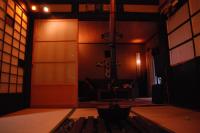From the engineering point of view, an antiseismic construction must satisfy two minimum requirements: it must not collapse after violent earthquakes t; and it must not suffer significant damage after an earthquakes of medium-low intensity. These objectives can be achieved in a conventional way, ...
Innovation in the construction sector are antiseismic constructions
From the engineering point of view, an antiseismic construction must satisfy two minimum requirements: it must not collapse after violent earthquakes t; and it must not suffer significant damage after an earthquakes of medium-low intensity.
These objectives can be achieved in a conventional way, increasing the robustness of building, that is, its ability to resist to seismic forces (although with damage to the structure and its interior during the most violent earthquakes), or with more modern strategies, as the seismic isolation and the dissipation of energy.
The first isolates the structure by the earthquake, by entering between soil and (usually) the basis of building flexible devices that in case of earthquake allow construction to move without significant distortion and it moves horizontally, without damage and without causing panic in the inhabitants.
The heat of energy, instead, are devices that attract and concentrate on themselves great part of energy forwarded from the earthquake to the entire building, transforming it into heat. In this way they minimize the damage and prevent the collapse of the structures which are connected
Related Insights
-
Innovation in the construction sector are antiseismic constructions
Real Estate Listings
For sale House, Japan, Tottori, Mikuriya, 1023, Mikuriya

For sale
House
232 m²
For sale House, Japan, Tochigi, Kanuma City, 924-9, Kamidono-machi, Kanuma-shi, Tochigi-ken, 322-0045 Japan

For sale
House
165 m²
For sale 2 Bedrooms, Japan, Hokkaidō, Niseko Ski Resort, Aza Yamada

For sale
2 Bedrooms
89.330 m²
For sale Farmland, Japan, Gunma, Seta-gun, 2061-2 Nishinokubo, Shimotazawa-aza, Oaza, Kurohone-mura, Seta-gun

For sale
Farmland
991 m²

 Realigro International
Realigro International
